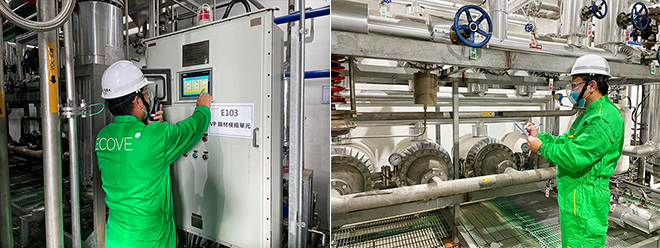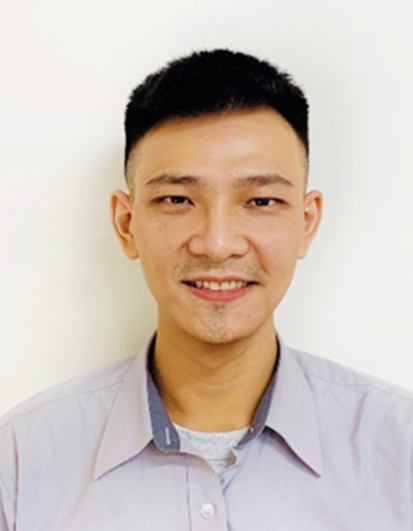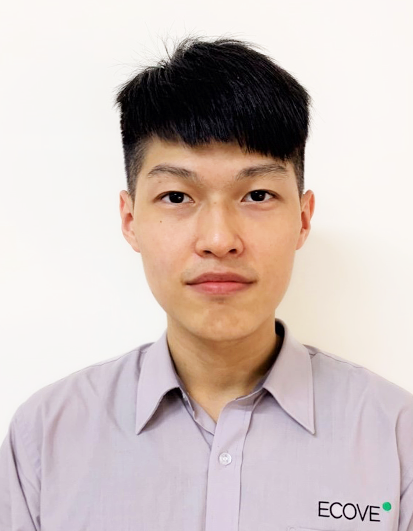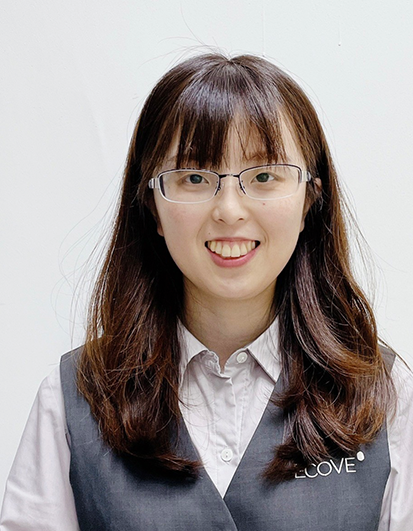Key Technology
關鍵技術
ECOVE Advances Green Technology, Realizing a Circular Economy with Solvent Recycling
One of ECOVE's member companies, ECOVE Solvent Recycling Corporation (ECOVE SRC), has been successfully helping semiconductor manufacturers to concentrate IPA (isopropyl alcohol) waste from their manufacturing processes and return them to the market supply chain. We at ECOVE SRC introduced the membrane separation technology based on the original distillation, separation, and extraction techniques to increase the concentration of IPA waste purification to 99.9% and reduce the water content to less than 1,000 ppm, with an energy-saving effect of more than 75%, allowing resources to be used more effectively and to realize a circular economy.
Introducing Membrane Separation Technology to Optimize Resource Cycling Efficiency
With the global demand for technology products growing significantly in recent years, driving production capacity and the complexity of the manufacturing process even higher, it has resulted in the generation of large amounts of chemical wastes. As a practitioner of resource cycling, ECOVE established ECOVE SRC to provide waste solvent recycling services to help Taiwan's high-tech companies handle the large amount of waste solvent generated from their manufacturing processes. ECOVE SRC purifies low concentration IPA waste of 5% to 85% through the distillation and separation technique and then purifies it to concentrations of 99.5% using the extraction and distillation technique. In 2021, we introduced membrane separation technique, adjusting the membrane system and operation parameters to increase the concentration of IPA waste purification to 99.9% and reduce the water content to less than 1,000 ppm. By increasing the concentration of isopropyl alcohol, ECOVE SRC can adjust the product concentration according to different market demands and thus expand service scope.
A Green Technology to Continuously Improve Product Value
Membrane separation is a technique that takes advantage of molecular differences in film permeability to separate components. The separation is achieved by driving some of the molecules or ions of a mixture through a membrane using a proper driving force (see Figure 1). The driving force that pushes substances through the membrane can either be difference in concentration, electric potential, temperature, or pressure. The membrane technology overcomes the bottleneck in traditional separation techniques and is mostly applicable to separating mixtures with similar boiling points that are difficult to distill. Vapor permeation (VP) is the membrane separation process used by ECOVE SRC. The principle is that the organic solvent that contains water is fed into the feed side in the vapor phase after preheating, while the other side is driven by vacuum suction, and permeation is achieved through pressure difference. The water molecules on the feed side are adsorbed on the membrane surface and driven by the partial pressure difference of water vapor, which escapes as water vapor on the permeate side of the membrane. The water-free organic solvent product is obtained from the discharge side.

Figure 1. Operating principle of membrane separation technology.
Membrane separation technology has the advantages of having high selectivity, being easy to operate, energy-saving, requiring only a small space for equipment, and having high configuration flexibility (see Figure 2). Because vapor permeation is a vapor-based feed, the membrane has low shrinkage and wear rate and has a longer life span, making it widely used in various industries. In addition, the technology can be easily combined with existing separation equipment and easily expanded, while requiring only a small amount of factory space to improve operational efficiency and increase product value

Figure 2. Vapor permeation system (left) and membrane system (right).
In terms of technical applications, VP membrane separation technology is used for organic solvent dehydration and can replace traditional distillation, extraction, adsorption, and other separation methods. The technology can break through the bottleneck encountered, especially for small amounts or trace moisture removal, where it has a more significant advantage. Compared with traditional distillation, extraction, and adsorption technologies, membrane separation technology can save more than 75% of energy, and its IPA recovery rate can reach 99%. The operation is driven only by vacuum pressure and post-membrane pressure without needing to add a third element. It is hence regarded as a "clean technology" for being able to deliver high-value products and reduce environmental impact.
Integrating Technologies with Know-how to Drive ESG Efforts for the Common Good
Under the global sustainability trend, green technology applications such as turning waste into resources or energy is an important approach for achieving a circular economy. By optimizing the front-end process, ECOVE SRC creates an opportunity to resource recovery and save energy and reduce carbon emissions through operations like regular greenhouse gas inventory, replacing heavy oil with natural gas for boiler fuel to reduce air pollution, improving the heat exchanger performance with increased efficiency of heat use during manufacturing process, and using renewable energy. Understanding the characteristics of waste materials, ECOVE SRC continues to refine technologies and has obtained patents such as the "distillation tower for extracting low concentration isopropanol combined with circumferential high gravity centrifugal distillation system" and "waste solvent purification and separation system." We provide the most suitable system combination in a confined space according to the client requirements In addition to technological advancement, ECOVE SRC has been actively involved in national and regional environmental policies and issues in recent years, sharing our experience and achievements in resource cycling with all sectors. We work together with all sectors concerned to implement the concept of "Every Resource Counts" in pursuit of the common good.



